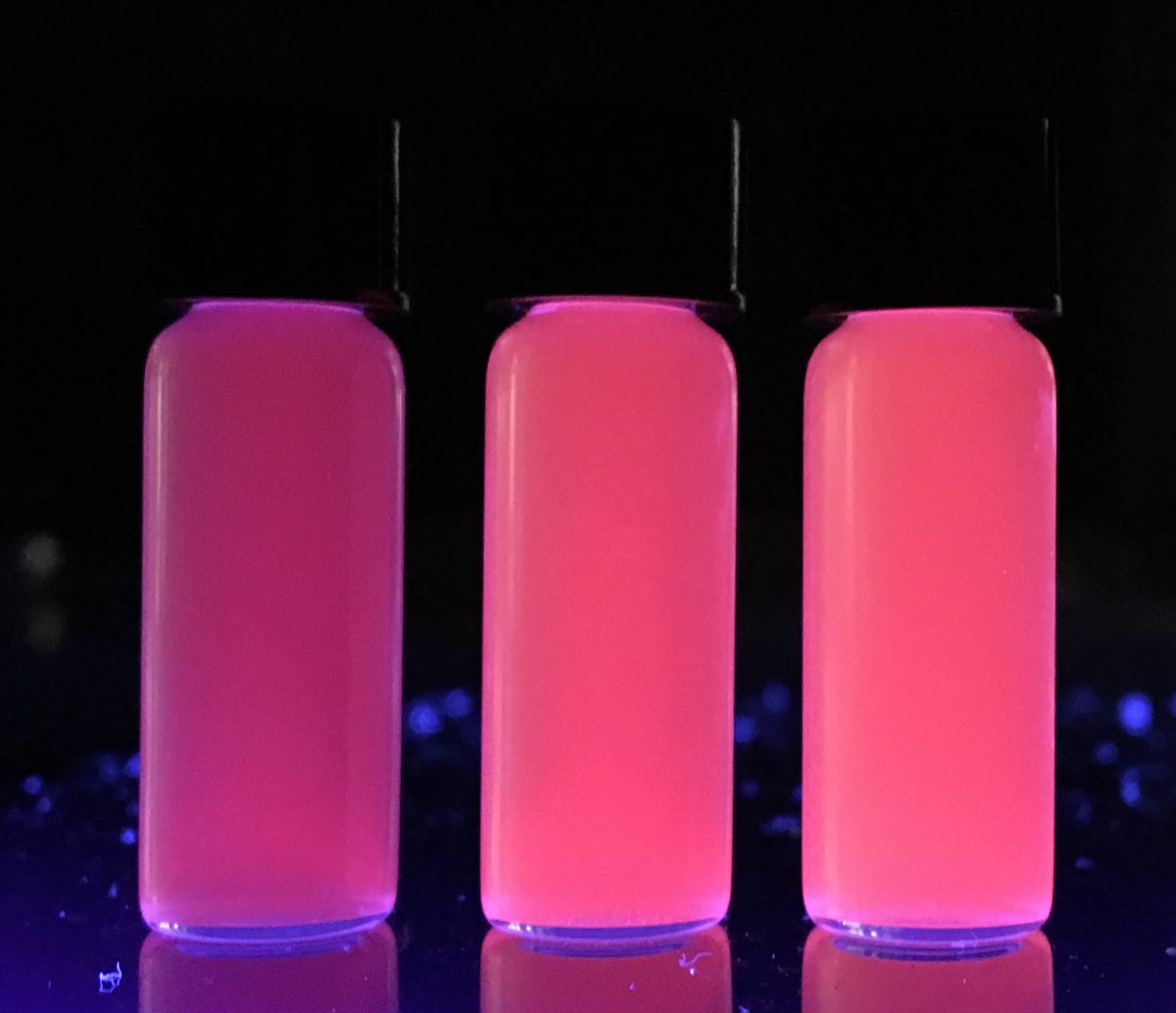
The silicon-based quantum dots in enzyme-conjugated form are shown here under UV light. Photo courtesy of Christopher Robidillo.
Nano-scale quantum dots could be the next breakthrough in medical imaging, with versatile options for treatment, according to new research by University of Alberta chemists.
The research team is creating materials based on silicon-based quantum dots that are purpose-built for targeting and manipulating biological activity-including cancer and other medical conditions. The technology combines photoluminescence and MRI imaging with targeted biological activity. Silicon is an ideal material for these purposes because it eliminates the drawbacks of commonly employed, but toxic alternatives.
"We are working with biocompatible silicon-based nanomaterials, also known as silicon quantum dots, to image and target cells of interest," said Christopher Robidillo, PhD student studying with Jonathan Veinot, professor in the Department of Chemistry. "We have prepared a material in which silicon quantum dots are chemically bonded to a biological molecule known as an enzyme. These molecules have functions that can be exploited for targeted and personalized treatment options for conditions including, but not limited, to cancer."
The first step involved devising a way to combine the silicon quantum dots with enzymes without losing their useful properties-something that has never been done before. With this stage of the research, Robidillo was successful in combining silicon dots with simple enzymes, providing proof of principle for the technology scientists will continue to develop.
"Our next step is to determine if our materials are effective in targeting cells of interest within a culture in a test tube," said Robidillo. "If we're successful with this, we will move to the next stage of using model organisms."
Robidillo won best presentation at the European Materials Research Society conference in Warsaw, Poland this fall for his work with this initiative. He is also a student in the Alberta/Technical University of Munich International Graduate School for Hybrid Functional Materials (ATUMS) program, which allows him to conduct aspects of his research in Munich, Germany.
The first paper, "Functional Bioinorganic Hybrids from Enzymes and Luminescent Silicon-Based Nanoparticles," was published in Langmuir(doi: 10.1021/acs.langmuir.8b01119). The second, "Interfacing enzymes with silicon nanocrystals through the thiol-ene reaction," was published in the Royal Society of Chemistry: Nanoscale (doi: 10.1039/c8nr05368e).